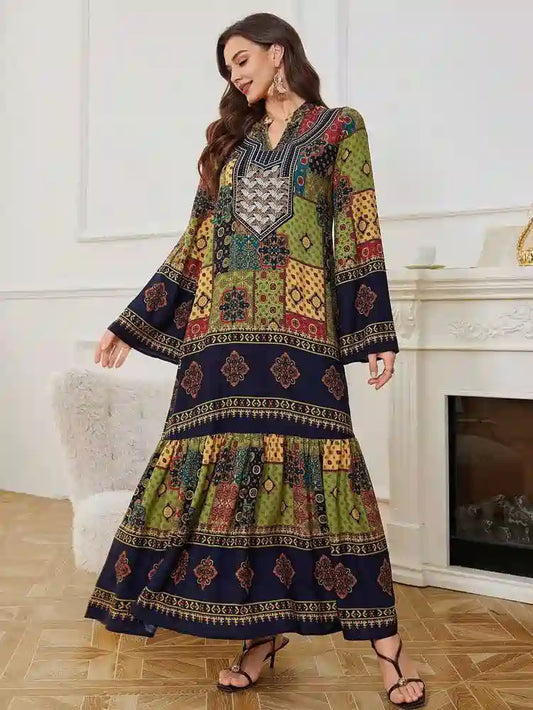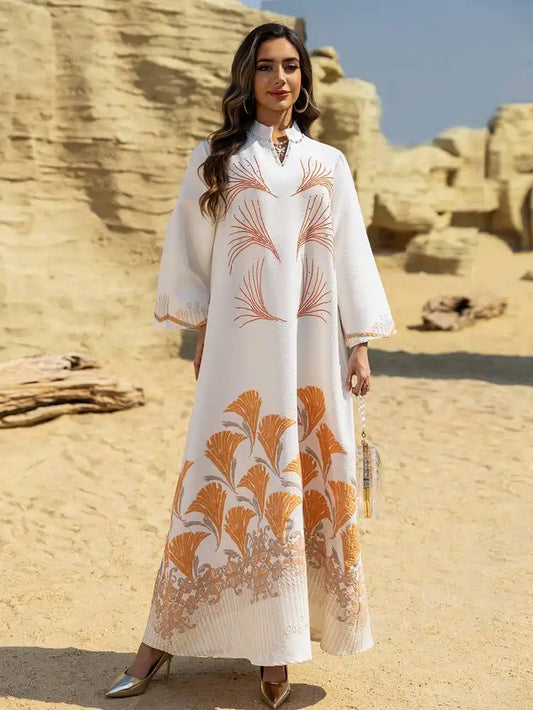The men's thobe is a garment that has traversed through time, carrying with it a rich tapestry of culture, faith, and style. It stands as a symbol of identity for many men across different regions, particularly in the Middle East and among Muslim communities around the world. In this blog, we'll take a closer look at the men's thobe, delving into its origins, its diverse styles, and the unique place it holds in both traditional and modern contexts.
Tracing the Roots: A Historical Perspective
The men's thobe has a history that dates back centuries, deeply intertwined with the cultural and religious fabric of the societies where it originated. It emerged as a practical yet meaningful form of attire, designed to meet the requirements of modesty set by Islamic teachings while also adapting to the climates and lifestyles of the people.
Over time, it became more than just clothing; it was a way for men to showcase their affiliation with their community, their respect for their heritage, and their adherence to their faith. From the bustling souks of ancient cities to the quiet corners of mosques, the thobe was a constant presence, evolving gradually yet retaining its essence.
The Versatile Design: Anatomy of a Thobe
Silhouette and Fit: The classic thobe boasts a loose and flowing silhouette that offers comfort and ease of movement. Its length typically extends down to the ankles, providing full coverage. The fit is generous, allowing for air circulation, which is especially crucial in warm climates where it is commonly worn. However, modern variations may play with a slightly more tailored fit around the shoulders or waist, adding a contemporary touch while still maintaining its overall loose charm.
Sleeve Styles: Long sleeves are a staple of the thobe, often designed with a simple straight cut that can be adjusted according to the wearer's preference. Some thobes feature cuffs with decorative elements like embroidery or subtle piping, which can enhance the elegance of the garment. There are also adaptations with shorter sleeves for more casual or warmer-weather wear, giving a fresh take on the traditional design.
Necklines and Collars: The neckline of a thobe can vary from a basic round neck to a more structured collar design. A simple round neck offers a clean and understated look, while a collar can range from a small, stand-up collar for a touch of formality to a larger, folded collar that adds a sense of sophistication. Embellishments around the neck area, such as delicate stitching or buttons, are not uncommon and can make the thobe stand out.
Fabric Selection: The choice of fabric plays a significant role in determining the character of the thobe. Cotton is a popular option due to its breathability, softness, and durability. It's good for everyday wear, absorbing moisture and keeping the wearer cool. Linen, with its lightweight and airy nature, is another favorite, especially during the hot summer months. For special occasions, silk or satin thobes are chosen for their luxurious sheen and smooth texture, exuding elegance and refinement.
Colors and Patterns: Making a Statement
Traditionally, white thobes have held a prominent place, symbolizing purity and simplicity. They are a common sight in religious settings and formal occasions. However, the color palette has expanded significantly in recent years. Earthy tones like beige, taupe, and khaki are now widely embraced for their versatility and connection to the natural environment.
Darker shades such as navy, black, and charcoal are favored for formal events or when a more solemn appearance is desired. In addition to solid colors, patterns have also found their way into thobe designs. Subtle stripes, geometric patterns, or even traditional motifs inspired by local art and heritage add a layer of individuality and visual interest to the garment.
Thobe for Every Occasion: Styling Tips
Daily Wear: For casual, everyday use, a simple cotton thobe in a neutral color paired with comfortable footwear like sandals or casual loafers is a practical and stylish choice. You can add a simple headwear like a kufi or a lightweight ghutra for a complete look. Roll up the sleeves slightly for a laid-back vibe while still maintaining the essence of the thobe.
Formal Gatherings: When attending weddings, Eid celebrations, or important social functions, opt for a silk or satin thobe in a rich, deep color. The addition of a bisht, a traditional cloak-like garment, can elevate the look to a whole new level of grandeur. Pair it with elegant shoes and a carefully coordinated headwrap, perhaps with a touch of gold or silver embroidery to match the formality of the event.
Cultural and Heritage Events: During cultural festivals or events that celebrate local traditions, choose a thobe that showcases unique regional patterns or colors. This is a great opportunity to display your pride in your heritage. Accessorize with traditional items specific to your area, such as a particular style of belt or a unique piece of jewelry, to create a look that is both authentic and eye-catching.
The Thobe in the Modern World: A Fusion of Old and New
In today's fashion landscape, the men thobe is experiencing a renaissance. Designers are reimagining it with modern cuts, incorporating elements like asymmetrical hems, hidden pockets, or innovative fabric combinations. It's not uncommon to see thobes paired with contemporary accessories like stylish sunglasses, trendy watches, or even backpacks, creating a harmonious blend of tradition and modernity.
This evolution allows the younger generation to embrace the thobe as a fashionable choice that still respects its historical roots. Social media platforms are filled with men sharing their unique thobe styles, inspiring others to experiment and find their own way of wearing this iconic garment.
Caring for Your Thobe: Preserving Its Beauty
To ensure your thobe remains in top condition, proper care is essential. Always check the garment's care label for specific instructions. Generally, cotton and linen thobes can be machine-washed on a gentle cycle with a mild detergent. Hand washing is usually recommended for silk or satin thobes to prevent damage to the delicate fabric.
When drying, air drying is a good option to avoid shrinkage or distortion of the shape. Iron on a low to medium heat setting, depending on the fabric, and use a pressing cloth if there are any decorative elements to protect them from direct heat.
The men's thobe is far more than just a piece of clothing; it's a living testament to a rich cultural heritage and a means of self-expression. Whether you wear it to honor tradition, make a style statement, or simply because it offers comfort and elegance, it holds a special place in the hearts and wardrobes of many. As it evolves in the modern world, it bridges the gap between the past and the present, inviting us all to embrace its timeless charm.










